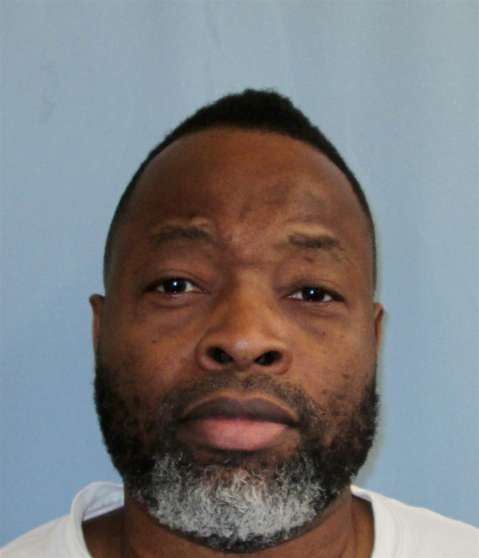James' death 'lengthy and painful,' says reporter who witnessed private autopsy
An autopsy of the punctured and carved body of Joe Nathan James Jr., who was executed by the state of Alabama in July, reveals that James suffered a “lengthy and painful death,” a reporter for a national magazine who witnessed the independent procedure concluded.
In an article from the Atlantic published early Sunday, Elizabeth Bruenig describes in detail the condition of James’ body — the multiple puncture wounds on his hands and wrists, the accordant bruising, the presence of incisions of varying depth along his left arm near his elbow — and reports the “dismayed” response from pathologists who reviewed the photos she took.
Bruenig attended the independent autopsy in Birmingham, funded by the human rights organization Reprieve US. The Advertiser has not seen the results of the independent autopsy nor any photos of the injuries referenced in the article.

The state performed its own autopsy on James at the Mobile medical examiner's office after the execution. Results from the state's official autopsy are not yet available.
Joe Nathan James, Jr: What we know, don't know about 3-hour execution delay
James was put to death for the 1994 killing of his former girlfriend, Faith Hall, of Birmingham. Prosecutors said he stalked and terrorized Hall for months before shooting her to death in her home.
The execution took place against the wishes of several members of Hall's family, including her children.
Having seen James' body, Bruenig wrote that it appeared Alabama Department of Corrections staff tried several times to insert IV catheters to deliver the lethal mixture into each of James’ hands, then his wrists, without success.
Jagged incisions farther up James' left arm indicate that ADOC staff tried to cut into James body to expose a vein for the injection, a practice that Joel Zivot, associate professor of anesthesiology and surgery at Emory University, described as a “stark departure from what would be done in a medical setting,” according to Bruenig's article.
Family speaks out: Sister of Joe Nathan James: Circumstances surrounding execution warrant an investigation
Questions remain: ADOC 'cannot confirm' if Joe Nathan James Jr. was fully conscious before his execution
Mark Edgar, pathologist at the Department of Laboratory Medicine and Pathology at the Mayo Clinic in Jacksonville, Florida, said in the article that another pair of incisions on James’ left arm were consistent with trauma, possibly caused by James tearing his own flesh against the restraints tying him to the gurney.
James was pronounced dead on July 28 at 9:27 p.m. after he was executed via lethal injection, three hours after his scheduled execution time. That delay — during which media witnesses were held in a van outside the prison’s execution chamber — initially raised eyebrows from journalists, death penalty opponents and human rights groups in Alabama and across the country.
Four media witnesses — including this Advertiser reporter — were sent by van from a media room about two miles away to Holman Correctional Facility at about 6:30 p.m. Upon arrival inside the prison’s gates, the reporters were told to remain in the parked vehicle.
Reporters were seated in the execution room at 8:57 p.m., and the curtain was removed to reveal James’ strapped to the gurney at 9:02 p.m. His death warrant was read at 9:03 p.m., and he was asked for any final words, to which he did not respond. The execution was cleared by Alabama Attorney General Steve Marshall at 9:04 p.m. and drugs began flowing through the IV in his left arm.
During the two minutes he was visible to media witnesses before the drugs ran through the IV, James’ eyes were fully closed. They did not open except for brief flutters, minutes into his execution. That night, ADOC Commissioner John Hamm told reporters that James was not sedated before media witnesses saw him unresponsive.
The ADOC “could not confirm,” however, that James was fully conscious prior to his execution.
In the Atlantic article, Zivot says several of the puncture wounds on James’ body are not in the vicinity of a known vein, which could be indicative of one of two things, he said: gross incompetence by ADOC medical staff, or an intramuscular injection used to deliver a sedating medication.
Because James chose to represent himself in court appeals requesting a stay of his execution, the immediate preparations for his death by ADOC staff were orchestrated in secret. Bruenig spoke with Jim Ransom, an attorney who had worked with James in the past who mourned that no attorneys were present in the hours before his execution.
“If [Ransom] had been present, he told me, he would have intervened on James’s behalf,” Bruenig wrote.
In 2018, attorneys intervened and stopped the execution of Doyle Lee Hamm.
Staff punctured Hamm in the legs and groin 11 times over a three-hour period in its botched attempts to set an IV line, causing him to bleed profusely on the gurney before his execution was called off. Hamm served a de-facto life sentence before dying of cancer complications in 2021.
The Advertiser has submitted public records requests to both the ADOC and Alabama Attorney General’s Office for copies of communications sent between those involved in James’ execution that night, including Marshall, Holman Warden Terry Raybon and other corrections officials.
Evan Mealins is the justice reporter for the Montgomery Advertiser. Contact him at emealins@gannett.com or follow him on Twitter @EvanMealins.
Your subscription makes our journalism possible. Subscribe today.
This article originally appeared on Montgomery Advertiser: Joe Nathan James Jr.: Autopsy reveals 'lengthy and painful' execution
